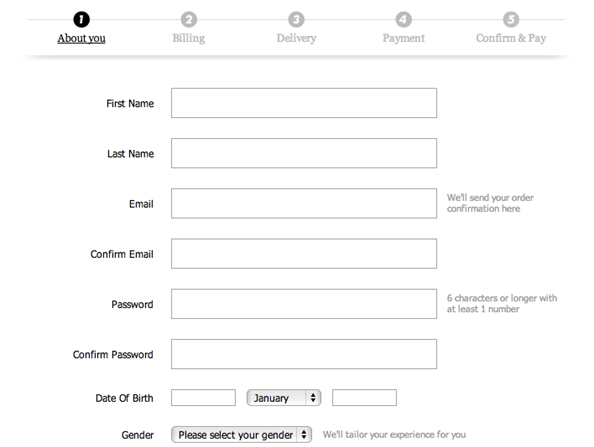What is Attribution? Put simply, it’s giving credit where credit is due! In any customer journey there will be many steps along the way. The fact that they eventually purchase an item in a particular store, or through a particular website, does not necessarily mean that anything the store or website has done has swayed the customer to purchase the product.
More usually there is a multiple channel approach: a chain of events that finally leads to the purchase and every link in that chain has significant impact. In fact, if any of those links were to be broken the chain could break down and the purchase not be made.
Attribution is the use of advanced analytics to work out how much each specific marketing activity – across both online and offline channels – has contributed to the desired customer action.
The diagram below by Theresa Wilcox (forbes.com) illustrates this perfectly. It shows how multiple channels have influenced the customer to buy the product before the purchase is actually made. Even though the item is eventually purchased in a store, attribution would enable the value of each corresponding marketing activity to be measured:
Attribution therefore helps brands track their marketing and media efforts more accurately and show how they impact the overall business.
Marketing companies are under increasing pressure to demonstrate the value of their campaigns and a recent American survey of Chief Marketing Officers found that brands plan to increase their spending on marketing analytics by 73% over the next three years.
At Xcite Digital we use attribution to measure the effectiveness of each of those channels. For example since working with Fair Finance over the past two years we have transformed their website into a lead generation platform, tying together a wide range of different marketing channels including SEO, PPC, Social, Email, Content and Creative.
Our aim is to promote a consistent brand message along the sale funnel, building credibility and using cross channel insight to improve the conversion rate as illustrated below:
- PPC campaigns allow us to appeal to customers looking to buy today
- Writing engaging content we create value based transactions with customers and build up long term credibility in the brand.
- Social campaigns build up a community of potential customers who see the value in the content we create for them – generating long term sales and promoting advocacy.
- Everything is fed back to the SEO campaign which has links being created from the distributed content via social marketing, and the more people liking, sharing or commenting on your content the better your Google ranking.
- When a prospect turns into a customer we place them into a well categorised CRM so we can continue to communicate through email, promoting repeat business and advocacy incentives.
Attribution enables us to measure the performance of each of the above channels and amend activity according to its effectiveness. For example results are tracked and visualised so we can understand the drop off at each stage of the sales cycle, for example:
The data we obtain is much more analytical that the diagram above, but it gives a good indication of how things are performing from month to month. For real time viewing results are pulled into a dashboard that shows how the campaigns are performing against key objectives. .
Attribution can be undertaken in various different ways though. In an earlier blog we explained some of the different methods of attribution as this area of marketing analytics is developing and becoming more and more sophisticated. We ended that blog with the words “There is little choice about the fact that you do need to undertake some method of attribution if you are to maximise the effectiveness of your digital marketing strategy.”
So, if you do want to benefit from attribution, what are some of the factors to take into consideration? Here are five things to bear in mind when building attribution into your cross channel digital marketing strategy:
- Start Early!
It can be tempting to wait until you have more data before starting to use attribution. But conversely, the sooner you do start, the more effective your marketing will become and the more accurate the data you collect. If there is specific data about your target market that you do not yet have, then there are third-party data providers out there to help fill any gaps. Also ensure that your attribution model is aimed at answering the questions that are currently most pressing for your business and is visibly saving money. - Ensure your attribution covers activity across all channels.
Attribution is no longer seen as purely digital but as cross-channel. It needs to account for both online and offline activity and also non-media factors such as what your competitors are doing, and even wider influences such as the weather! - Don’t just measure the activity: use the insight!
Cross channel insight allows us to find out more about our target audiences, for example data gathered from PPC (Pay Per Click) responses can be used to work out what has a high CTR (Click Through Rate) and what achieves low CPA (Cost Per Acquisition). - Never underestimate the influence of social media.
It is a continually changing powerful force and its impact needs to be continually measured to be understood. For example, if a post is made on a particular social forum and attracts a lot of engagement such as comments, shares, likes etc then this insight can be applied to other channels such as PPC ads, website landing pages, email campaigns etc - Attribution can help with effective retargeting.
It is estimated that in general around 2% of shoppers convert on their first visit to an online store. Retargeting is a way of trying to win back the other 98%. It works by keeping track of people who visit your site and then displaying your retargeting ads to them as they visit other sites online. There are platforms available to manage this process such as Adroll and Google. Retargeting can help to convert window-shoppers into buyers.
Returning to a specific example of the use of attribution in our work with Fair Finance, we ran a multiple channel campaign to target different audiences around ‘Bad Credit’. We found that this was an especially high area of activity leading to a spike in website traffic that was completing an application online. Using this knowledge we used the same messaging and approach on the other channels i.e. Social engagement, website landing pages and SEO, email campaigns, and content articles.
We delivered the campaign using a range of different activity including SEO, PPC, Social, Email, Content, UX and Creative, and promoted a consistent message at each stage of the buying cycle. This built brand awareness and credibility, leading to 210 enquiries in the first month and growing at a rate of 20%.
As we said at the beginning, Attribution can fundamentally be seen as giving credit where credit is due. If you are not doing this then you will not have the best insight into the effectiveness or otherwise of your cross channel marketing strategy.





